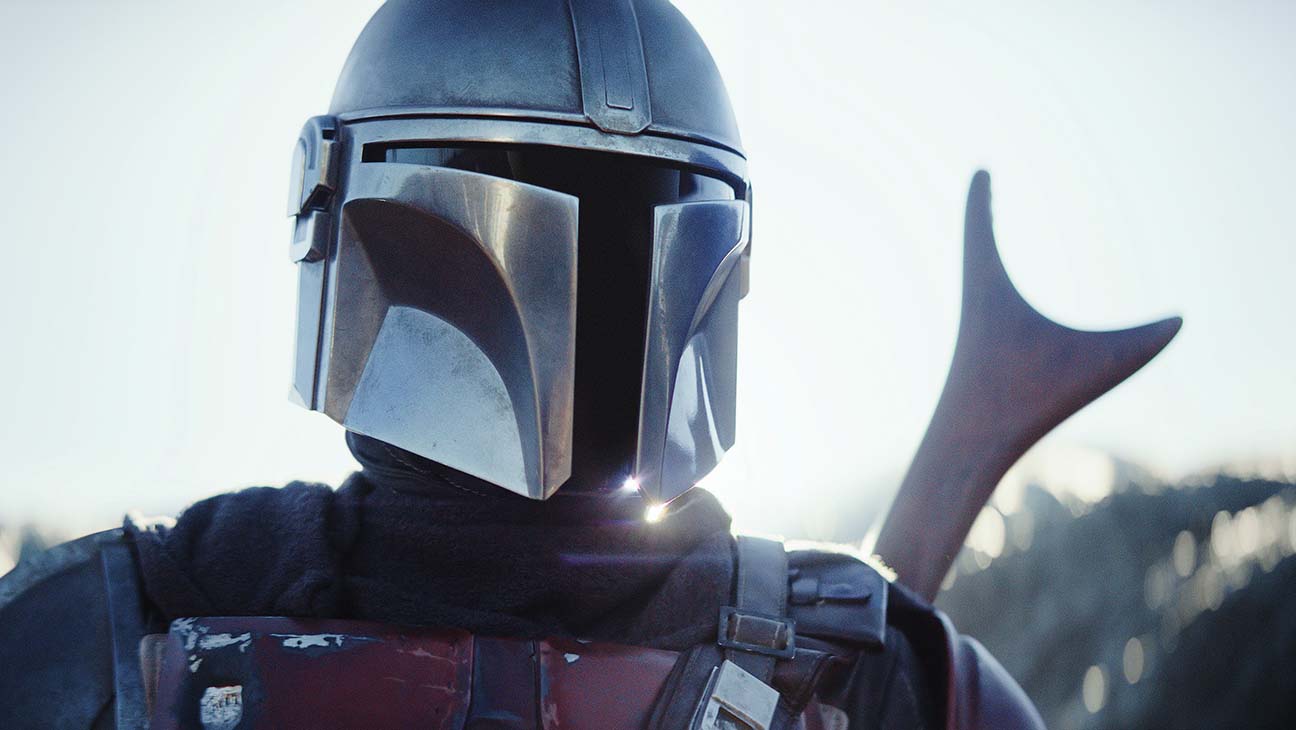Franchises that inspire a fanatic devotion are funny things. Fans take a proprietary ownership over such things and tend to argue (even with other fans) over what constitutes valid, worthy and continuity-preserving additions to the canon. What with all the sequels, prequels, reboots and spin-offs assailing us these days, which constitute proper fan service and which go down in the books as “destroying our childhood.” Few series have as many loyal fans as the Star Wars films. And any Star Wars fan worth their salt will gladly explain to you why Attack of the Clones or The Last Jedi or Solo or The Star Wars Holiday Special suck. Their passion is appreciated. But now, with Disney having bought out Lucasfilm, we’re faced with all sorts of new, unfamiliar and potentially unwelcome Star Wars movies and TV shows. The franchise’s first venture into live-action television comes in the form of Disney+’s “The Mandalorian.” And, so far anyway, the future of the franchise looks just fine.Speaking as an old school fan who saw Star Wars (before it had the tack-on title A New Hope) at Albuquerque’s long-demolished Wyoming Mall Theater, “The Mandalorian” is perfectly in tune with the spirit of Lucas’ 1977 original. It captures the exact same adventurous, movie-loving, world-building “kids film for adults” feel that I responded to as a wide-eyed kid. The show is created and largely written by Jon Favreau (an enthusiastic Hollywood workhorse with Elf, Iron Man, The Jungle Book and The Lion King under his belt). This gives “The Mandalorian” a consistency and a singular point of view. Like Lucas’ original vision, the show plays out like a space western—this one focused on a Mandalorian bounty hunter (not, but not unlike, fan fave character Boba Fett). The show takes place after the events of Return of the Jedi, allowing it to wallow in the somewhat lawless aftermath of galactic war. It’s the perfect period in which to set a Star Wars spin-off. Whoever saw Star Wars: A New Hope and thought, “Hey, we need to explore more of this Galactic Senate stuff on Coruscant!” was an idiot. (Sadly, I think that idiot was George Lucas.) Jon Favreau, on the other hand, saw Star Wars and thought, “Man, we need more about these bounty hunters, smugglers and rogues on Tatooine.” Give that man a cookie!Our Mandalorian (he, like most of the characters here, doesn’t have a name) is played by Pedro Pascal (Oberyn Martell from “Game of Thrones”). Pascal never shows off his face, however, since the battle-worshipping Mandalorians never remove their armor. They’re like a race of mercenary samurai, taking on any job that allows them to show off their martial abilities. Although producers have kept much of the show’s characters and storyline under wraps, at this point most of the world (the Facebook-viewing parts, anyway) has been exposed to The Mandalorian’s sidekick, “Baby Yoda.” The tiny alien toddler (a puppet, in keeping with the style of the original films) ends up in The Mandalorian’s charge. Instead of turning the cute (and possibly quite powerful) tyke in for a reward (from some very bad people), our gruff-but-lovable antihero goes on the run, setting up the show’s basic premise. Fans of other media may recognize this as a variation on Kazuo Koike and Goseki Kojima’s seminal 1970 manga series Lone Wolf and Cub. That influential Japanese comic book spawned a famous film series and inspired countless imitations. (Max Allan Collins’ graphic novel Road to Perdition—made into a 2002 film starring Tom Hanks—is one of them.) It’s the perfect template for a Star Wars property. In addition to mirroring tropes from the classic Western genre, George Lucas borrowed a great deal from Japanese samurai films. The original Star Wars was basically a space-age rewrite of Akira Kurosawa’s The Hidden Fortress. The familiar premise of “tough gunslinger protects innocent child” is a brilliant hook on which to hang this show’s various adventures. Admittedly, “The Mandalorian” plays out as a simple, episodic adventure series. Narrative complications are kept to a minimum, characters are defined by basic traits and plots are more or less resolved within the show’s terse 40-minute runtime. It’s definitely a “family” show, and at times it feels notably juvenile. But in context, that doesn’t count as an insult. Star Wars was created for kids—and the occasional adult capable of remembering what it was like to be a kid. Watching “The Mandalorian” (the five episodes out of eight currently available for streaming, anyway), I had a grin on my face that I hadn’t experienced since the old Wyoming Mall Theater.For my money, “The Mandalorian” is a fan’s dream. It’s got the correct look and feel. It’s pure Saturday movie matinee fun. It’s loaded with old school Star Wars references that don’t come across as winking Easter eggs—but do seem like thoughtful expansions to the universe we grew up loving. Also, Baby Yoda is the greatest thing ever, so there’s that. Love Star Wars? Then you should get to loving “The Mandalorian.”
“The Mandalorian” Season 1 is available for streaming on Disney+.

